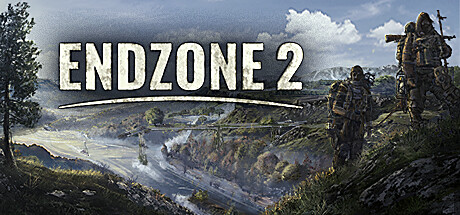

- I can totally understand that you don't want to traverse the entire settlement to gather the resources you need for your work, but constructing your toolmaker right beside our residential area? It's all loud and dirty here now. I don't like living like this.. -

We briefly discussed how production chains work in a past Devlog. Let's dive deeper in this topic now. In Endzone 2, we focus on giving each resource a significant role in the game. Early game resources remain important as you progressively unlock and need new ones. The reason lies in how they are interconnected throughout the game. While wood is primarily crucial for constructing buildings early on, it becomes less important in that regard once a settlement has a stable base. This is why wood is a component in nearly every production chain, ensuring that collecting it still feels essential.

Let’s break this down further with an example:
The Woodcutter only needs a nearby environmental resource, which naturally is a lush forest. As long as trees are present, a Woodcutter can produce wood, which can then be used to construct new buildings.

For a very basic early game building, this level of complexity is more than enough. But let's move a bit further down the progression. Soon, we will need a Coalmaker, as coal is a frequently used resource in many production chains, like protective clothing, iron smelting and many more. The Coalmaker requires wood to function. So, besides its construction costs, wood becomes a resource that is continuously consumed to produce coal.

Let's take a look at their UI in the game to explain this further:


Comparing the UIs of these buildings, which are placed next to each other, reveals a few things:
- The Woodcutter produces about four times as much wood as the Coalmaker produces coal in the same amount of time, even if the full workforce is employed.
- The Coalmaker is connected to a road network, which boosts its efficiency; we'll get to that in a moment.
- The required resource is now wood, which has a small green "+" icon that I will explain shortly.
This demonstrates that wood is a highly essential resource, even for basic production chains. Naturally, we will need a lot of wood, but we don't want to continuously spam the Woodcutter building. We can increase the efficiency of each building by fulfilling a few criteria. The graphic below shows factors that impact efficiency.

As you can see, there are numerous ways to increase the efficiency of a single building. Most of these methods check the building's radius to see if certain criteria are met within this area. To boost the Coalmaker's efficiency, we should place it next to the Woodcutter. Both buildings should also be near storage facilities, such as the Town Center or a Material Depot, and have nearby housing of the economic type. The final step is to connect the buildings and the Town Center with a road network. This setup can boost the Coalmaker's efficiency up to 150%. Of course, the Woodcutter would only add up to 130% as there is no base resource from another building it could profit from.


Now that we have covered the basic functionality, let's look at a more complex example:

To produce copper, a vast number of different steps need to be fulfilled. As you can see, wood is part of four different substeps in the chain, highlighting its importance even in a late-game scenario where maintaining a constant supply is crucial.
The screenshot below shows how such a production chain could be placed if enough space is available. Note however, that this particular zone did not even have proper resource slots for iron or even copper, so 2 mines are still missing here to even make it function. This particular case would require to construct mines on a different zone that has copper and iron available and transfer them via Trading Routes.


To summarize the key points:
- Buildings can exceed 100% efficiency if certain criteria are met.
- These criteria usually involve placing buildings of the same production chain close to each other.
- Road networks and storage buildings, as well as housing of the same settlement branch, also increase efficiency.
- Early game resources remain important for the production of late-game resources.
- Space is limited. Adjust the placement of your buildings based on which resource is needed the most.
Additionally:
- Houses from different settlement branches do not like being near production buildings that pollute the air, such as a Coalmaker or a Copper Smelter.
- Space is not only limited, but different ground types might restrict your building plans further. Remember that fertile soil and swamp areas are required for some buildings to be placed.

Don't forget:
A free Demo for Endzone 2 will be available starting June 7!

You call yourself a true city-builder enthusiast? Tell us what this production chain is for in the comments!


https://store.steampowered.com/app/2144640/Endzone_2/
As Discord is our main platform for feedback and discussion within the community, we highly recommend joining us and sharing your feedback there.



